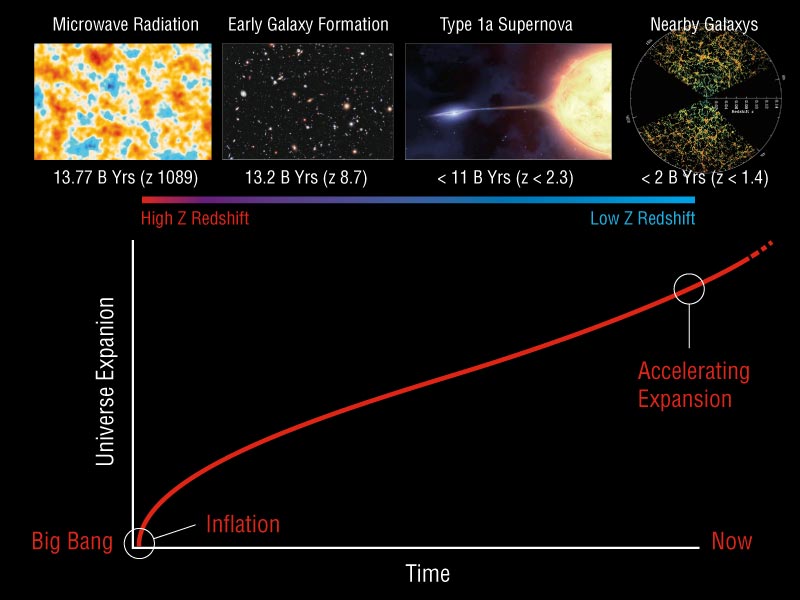

ObservationsTruly data-driven cosmology has been made possible within the last 2-3 decades by observational advances on three major fronts:
We discuss each of these on separate pages. It is important to realize that each set of observations provides a different window on the evolution of the universe. This is in part because each observational set provides a view of the universe at a different look-back time, quantified by the redshift of the radiation reaching us. This is illustrated in an approximate way (not to scale) in the figure below. The CMB radiation we observe in microwaves provides a snapshot of the 'infant universe', whereas observations of supernovae, galaxies and quasars show us conditions in a more evolved universe. The ΛCDM model ties these different pieces of information together in a cohesive picture. If the standard model cannot explain data from all redshift ranges within the observational uncertainties, then there is either the exciting possibility for new physics, or alternatively, the possibility that the observational errors are not well understood.  Image Credit: NASA / LAMBDA Archive Team JPG (58kb - 800 x 600 px) JPG (192kb - 1280 x 960 px) PNG (1.1mb - 2400 x 1800 px) PDF (214kb - editable text) SVG (508kb) EPS (423kb) Contributed by the NASA / LAMBDA Archive Team. |

